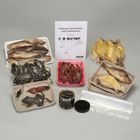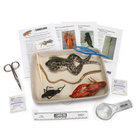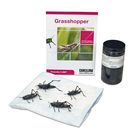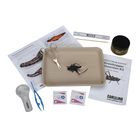Grasshopper Dissection

Videos
External Grasshopper Anatomy
- Obtain a preserved grasshopper and place it on your dissecting tray, dorsal side up.
- Observe the grasshopper’s external anatomy. Members of class Insecta have 3 main body regions: the head, thorax, and abdomen. Locate each region on the grasshopper using the drawing below as a reference.
- The grasshopper’s thorax has 3 segments, each of which bears a pair of legs. The 2 posterior thoracic segments each have a pair of wings, also. Study the grasshopper’s thorax and locate the 3 segments and their appendages.
- Observe the abdomen. Find the spiracles, the tiny openings into the tracheae. Tracheae are a system of tubes that extend through the body and function in gas exchange. Spiracles can also be seen in the thorax.
- The grasshopper’s head possesses sensory structures. Observe the 2 compound eyes and the 3 simple eyes (ocelli) located between them. One pair of antennae can also be seen.
- Observe the mouth and feeding appendages. The mouth contains a pair of mandibles and 2 pairs of maxillae.
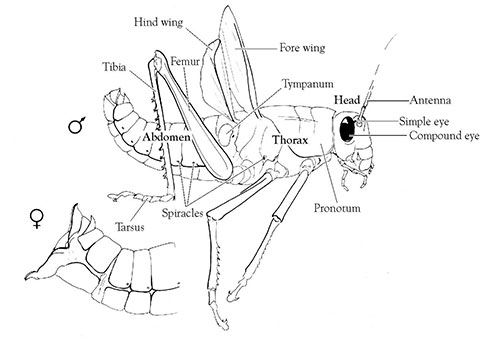
Internal Grasshopper Anatomy
- Place the specimen on the dissecting tray ventral side up. Use scissors to cut through the exoskeleton’s ventral side from the head to the posterior end of the abdomen.
- Pull the cut sides apart and observe the tracheal tubes running into the internal organs. Pin each side of the insect to the dissecting pan.
- Locate the yellow fatty tissue that covers the internal organs. Carefully remove this layer with forceps to observe the organs. Refer to the figure below to locate the structures discussed in the following steps.
- Locate the digestive system. The crop, found at the anterior portion of the digestive tract, is an organ for storing food. The gastric caeca, or digestive glands, are attached to the stomach.
- Identify the reproductive organs that lie on either side of the abdominal digestive organs to determine the sex of your specimen.
- Females: The ovary appears as a series of tubules containing rod-like eggs. Females also have ovipositors, 4 curved projections at the end of the abdomen. These are used to dig a hole for egg deposition.
- Males: The testis is a coiled cord containing many tubules. The posterior end of the male abdomen is blunt with small claspers that are used during reproduction.
- After you have completed the dissection, follow all clean up instructions and dispose of the specimen in accordance with local guidelines and your teacher’s instructions.
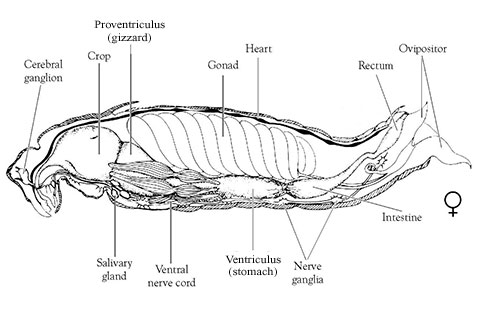



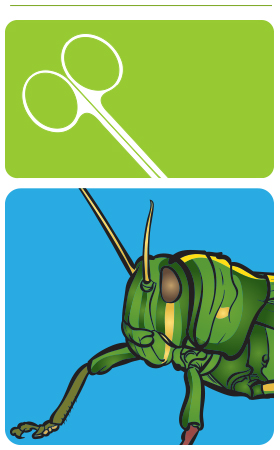



 View
View View
View

